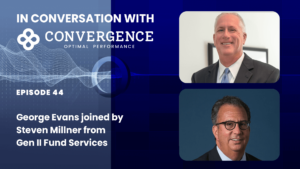On May 20th, The HBO movie “The Wizard of Lies” (airing Saturday) showcases the legendary talents of both its star and director, Robert De Niro and director Barry Levinson, by re-telling this shocking tale of greed and betrayal. Yet, despite the very public stories shared by his many victims and the myriad lessons supposedly learned, investors continue to be skinned by frauds and scams and cleverly disguised fee and expense skimming operations by unsavory Advisers. While the SEC cannot save investors from fraud, investors can help avoid it themselves by paying closer attention to Form ADV, a regulatory filing requirement for exempt and non-exempt State and SEC registered Advisers. Had today’s version of the Form ADV been in place when Madoff was up to no good, investors would have seen some important red-flags that may have spooked them enough to avoid what was, for many, a life shattering experience.
It seems like only yesterday that a Wall Street scion named Bernie Madoff was publicly cuffed and arrested for concocting the biggest Ponzi scheme in history, literally in plain sight, despite the facts that clues to his malfeasance were abundantly available. So, what clues existed then and why did so many who suspected Madoff of fraud choose to remain silent? Was it out of their fear of political, business and social reprisals or was it simple greed? Who knows, yet Convergence has stepped into the breach by developing a clear and simple way to communicate these potential red-flags, or clues, to investors and other members in the Advisers eco-system.
Convergence uses the terms “complexity profiles and factors” to describe the operating risks in an Investment Adviser based on the responses they provide to questions raised in their SEC Form ADV and other regulatory filings. We have identified 40 business conditions derived from the Advisers Form ADV responses that provide key insights into operating risk. Operating risks need to be understood and may be well-controlled by the Investment Adviser’s staff and their group of third party service providers. Yet, if they are ignored, or are not being managed, then investors beware, it will cost you dearly.
Harry Markopoulos presented a compelling analysis to the SEC pointing out 30-red flags to support his view that Madoff could not have generated the returns he boasted without either (1) running a massive Ponzi scheme or 2) illegally front-running client trades, twenty-nine of his thirty red-flags required advanced math and market aptitude, well beyond the grasp of mere mortals, to understand Mr. Markopoulos. The one red-flag that could be understood by mere mortals, was the simple fact that his brother-in law, a strip mall accountant, was the only accounting firm allowed to see into the “Madoff secret sauce”.
Convergence reviewed Madoff’s last Form ADV filing dated 1/7/2008 and, while not nearly as robust as today’s form, identified additional red-flags worthy of review by investors at the time.
- Madoff did not disclose management or incentive fees, he earned commissions. He would have collected much more by charging Management and Incentive based-on his asset levels and performance returns than the Brokerage Commissions he claimed to generate. This was noted in the Markopoulos research.
- Madoff was a broker dealer and traded and cleared his own securities, not a Prime Broker, so he manufactured his own trade confirmations.
- Madoff was not the General Partner or Investment Adviser to a registered fund-What form of account held the $17bn in assets he reported.
- Madoff disclosed that he had no employees or third-party firms soliciting clients on his behalf.
Well who was raised the $17bn?
- Madoff disclosed 10-25 clients yet disclosed a broad distribution of client types, suggesting massive average client account holdings.
- Madoff reported 51-100 employees yet only 1-5 that performed investment advisory functions, including research. The percentage of non-investment-to-investment staff ratio is between 9:1 (46/5) and 19:1 (95/5), which is unheard of and suggests an army of non- investment staff. What type of work did they do, given the highly-automated type of trading being conducted by Madoff?
- Madoff disclosed providing continuous supervision over securities portfolios yet disclosed that he did not Advise a private fund. What type of account or fund held his $17bn?
- Madoff’s Chief Compliance Officer was also his Director of Trading, not exactly the segregation of duties one would expect in a $17bn fund.
- Madoff disclosed several regulatory violations on his Disclosure Reporting Pages (DRPs).
In the revised Form ADV post-Madoff, Advisers are required to report additional information that would have raised additional red-flags had they been in place during the Madoff era. These include:
- Disclosures around the names of the funds that he was sub-advising
- Amount of Cash and Securities held in Custody for clients
- If he disclosed a private fund he would have had to disclose its Fund Administrator, which would have probably been “Self-Administered”
- Its Fund Auditor, who we know was his brother in law and not a Big 4 firm, would be considered unusual for a fund of that size.
- Its Custodian Bank, which was a small local community bank, was not known to have the competency to perform the activities expected to administer the billions of dollars in cash and securities it was deemed to control.
- Its Prime Broker, which was himself or his related affiliate.
- Disclosures on whether the valuation of fund and account assets are done by parties unrelated to the Adviser would have been answered 0%. Unusual for a portfolio comprising public securities and OTC options.
Convergence invites investors, service providers and Advisers to call us to learn more about the factors and conditions that can lead to operating risk and fraud that may be developing in the markets.
Working together, we will evaluate and expose red-flags that will help many from becoming another unwitting victim of fraud.
![Single Post [Template] Single Post [Template]](https://www.convergenceinc.com/wp-content/uploads/2019/09/sean-pollock-PhYq704ffdA-unsplash-1.png)

